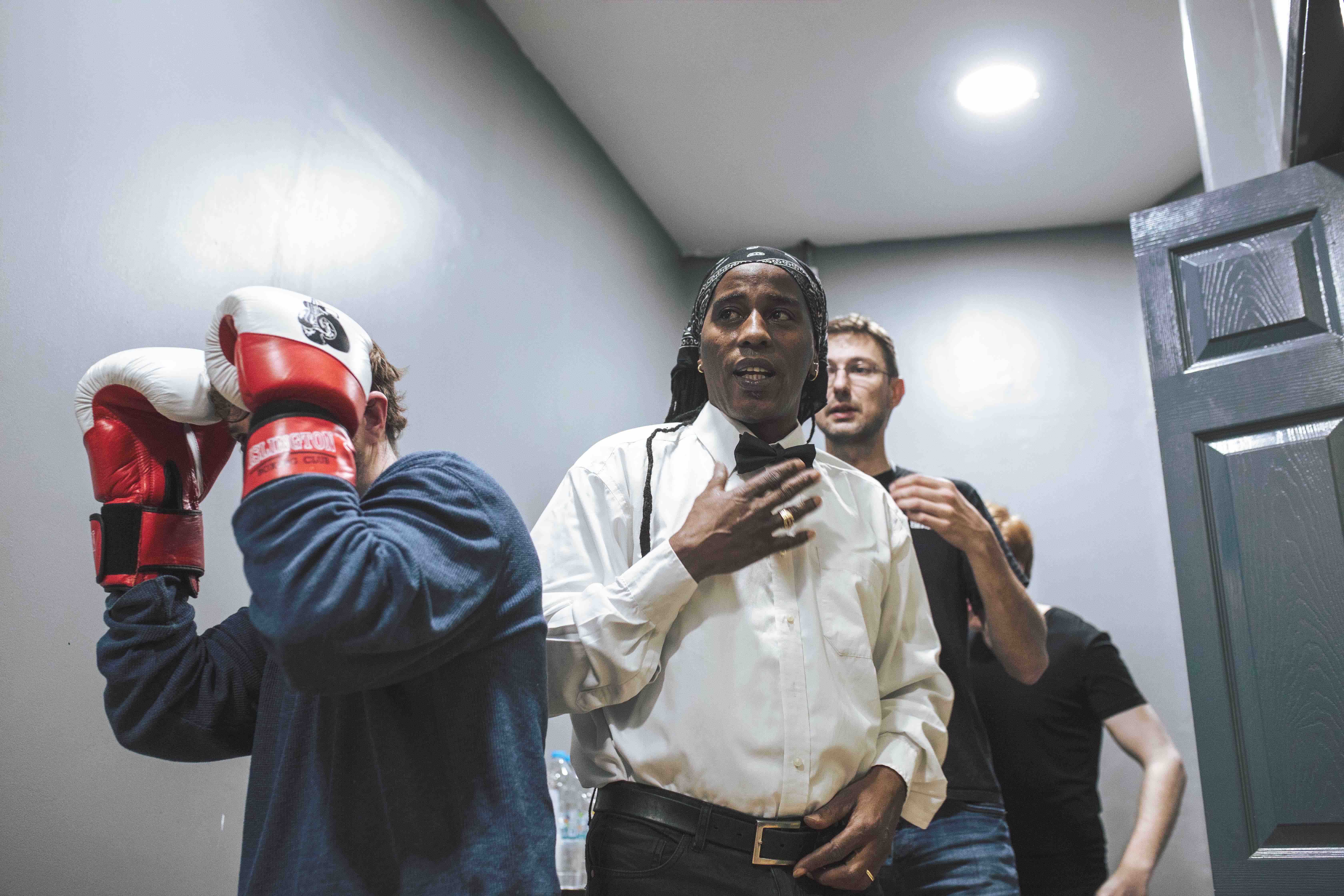Chessboxing: the new craze where brain meets brawn
- Text by Tom Hale
- Photography by Theo McInnes

At a packed venue in North London, a ragtag crowd of curious punters and weekend warriors have gathered around a boxing ring. As the smell of beer and sweat starts to build, a strange chant rumbles through the venue: “CHESS! CHESS! CHESS!”
They are here to witness chessboxing, the ultimate game of brain-versus-brawn where players quickly flicker between rounds in the boxing ring and bouts at the chessboard. To take home the glory, they must their coerce their opponent into a knockout or batter them into checkmate.
The game has its spiritual origins in an obscure sci-fi graphic novel from 1992 called Froid Équateur, but it was first flung into reality by Dutch artist Iepe Rubing in 2003. Tim Woolgar, top dog at the London Chess Boxing Club, first brought the game to the UK in 2008 after he stumbled across a match in Germany. With the thick worn hands of a boxer, but the glazed glasses of a true nerd, he embodies everything you’d imagine a chessboxer to be. This is no sideshow shtick for him: this unlikely mashup makes perfect sense.


“It’s always surprising. It always looks weird two boxers sitting down playing chess about to start punching each other out in a few seconds,” Tim quietly says while carefully lacing up boxing gloves.
“But it works really well,” he says, looking up for one moment. “The chess is an externalisation of boxer’s inner mind and the boxing is the externalisation of the chess player’s inner mind.”
A motley crew of fighters starts to arrive in the changing room, some of who have flown as far as Finland and Amsterdam for the night. One of these bags of nerves and adrenaline is Aaron “Sween Machine” Sweeney, who is bracing for his first public fight. He was awarded the nickname during his time as a sponsored skateboarder for the likes of Vans and Volcom. Currently, however, he’s studying a PhD in computational chemistry. Somewhere in between these distant two worlds, he found chessboxing.


“I’m nervous,” Aaron says while punching a stress ball tethered to his baseball cap. “It’s the chess that’s the hard bit. You can just push yourself to box above your level for a round, but you can’t get better at chess in the moment.”
The nervous energy in the room is quickly spent and murmurs of the crowd begin to grow outside. It’s showtime. As the ref finishes his tin of Guinness and heads out towards the main stage, he looks back and smirks: “You don’t know who I am? You don’t know chessboxing then.”
Each five of the fights start as any boxing match should, with the bombastic intro music, a “sexy Santa” ring girl flashing a “Round 1” sign, and a DING of the bell. The duals switch in between four-minute rounds of speed chess and three minute-rounds of boxing, quickly alternating from scrappy brawls before slightly dazed boxers return to the board with sweat-glazed backs.
All five fights end with a checkmate, not a knockout, which tends to be the norm in most chessboxing duels. Despite the lack of blood or theatrical defeats, the crowd’s appetite is quenched. The chant rumbles on: “CHESS! CHESS! CHESS!”








Follow Theo McInnes on Instagram.
Follow Tom Hale on Twitter.
Enjoyed this article? Like Huck on Facebook or follow us on Twitter.
You might like

Maryam El Gardoum is breaking new shores for Morocco’s indigenous surfers
The Amazigh Atlantic — Through her groundbreaking career and popular surf school, the five-time Moroccan champion is helping women find their places in the waves.
Written by: Sam Haddad

Volcom teams up with Bob Mollema for the latest in its Featured Artist Series
True to This — The boardsports lifestyle brand will host an art show in Biarritz to celebrate the Dutch illustrators’ second capsule collection.
Written by: Huck

Bohemian FC is more than a football club
Carefree, wherever you may be — With rock star friends, a fierce commitment to Palestinian solidarity and their very own climate justice officer, north Dublin’s fan-owned team make their presence felt far beyond the pitch.
Written by: Tiernan Cannon

Gazan amputees secure Para-Cycling World Championships qualification
Gaza Sunbirds — Alaa al-Dali and Mohamed Asfour earned Palestine’s first-ever top-20 finish at the Para-Cycling World Cup in Belgium over the weekend.
Written by: Isaac Muk

Why Katy Perry’s space flight was one giant flop for mankind
Galactic girlbossing — In a widely-panned, 11-minute trip to the edge of the earth’s atmosphere, the ‘Women’s World’ singer joined an all-female space crew in an expensive vanity advert for Jeff Bezos’ Blue Origin. Newsletter columnist Emma Garland explains its apocalypse indicating signs.
Written by: Emma Garland

We are all Mia Khalifa
How humour, therapy and community help Huck's latest cover star control her narrative.
Written by: Alya Mooro

